Financial Management Assignment: Performance Analysis Of Wesfarmers In 2018 & 2019
Question
Task:
Context:
The purpose of the financial management assignment is to provide you with the opportunity to apply the knowledge and skills acquired in FINA600 Financial Management, to a practical task, involving the use of ‘real?world’ accounting information. This is intended to consolidate your accounting knowledge and skills.
Instructions: The basic requirement is to undertake a general financial analysis, comparing financial position and performance over the two most recent financial years, of an ASX listed company. The annual report for the chosen company should be available on the company website.
Answer
Executive Summary
The report on financial management assignment aims to evaluate the financial performance of Wesfarmers over the years 2018 and 2019. The report provides an insight into the investment potential of the company. Wesfarmers is a giant in the retail segment of Australia and is listed on the ASX. As seen from the report, the company has provided strong financial numbers in 2019 as compared to 2018. The company has outperformed the 2018 performance. Further, the acquisition of Kidman Resources Limited and Catch group holdings will help the business to expand. The report evaluates the liquidity, solvency, efficiency, and profitability of the company.
The evaluation provides a strong insight that the profitability of the company is intact with high ROA and ROE while the company should increase its liquidity base for better performance. The solvency of the company is safe and not exposed to higher risks. Further, going by the fundamentals and other aspects the shares of the company is a must buy and should be included in the portfolio.
1 Introduction
1.1 Background and Business
In the present scenario of the global environment, there are different economies and it is upon the investor to select a company that will provide adequate returns. From a larger perspective, the investment is influenced by different external scenarios and the rapid changes taking place in the economy (Rakow 2019).
To ensure this, it is essential that the PESTEL analysis should be conducted that helps in understanding the external situation of the company and the manner in which the variables impact the company. Through this report, an assessment is being conducted on one of the major giant retail companies in Australia that is Wesfarmers.
The study will focus on the company’s financial statements followed by the horizontal analysis of the financial statements. The main focus will be on four major areas that are profitability, liquidity, efficiency, and solvency. The findings will determine the decision of investment in the company.
This report analyses the performance of Wesfarmers in the year 2018 and 2019. Further, the comparison of two years provides an insight into the performance of both the years. The organization Wesfarmers was established in the year of 1914. The headquarters of the organization is situated in Perth and it functions with more than 495000 stakeholders and 217000 employees (Wesfarmers 2019). The diversified business activities conducted by the organization may help to flourish in the market. The major objective of the organization is to provide returns to the shareholders and maintain sustainability in the environment to gain a competitive edge in the market.
2 Company Analysis
2.1 Financial statements, Current Financial performance, economic outlook
The Organization was observed to produce strong profit contributions for the financial year 2019. The business activities have not only helped the organization to improve the business portfolio but also have helped to generate a growth of 13.5% in NPAT. The 15% contribution in the stakes of Coles has helped the organization to increase the NPAT with 8.3% (Wesfarmers 2019). The fertilizer business of the organization is also performing smoothly.
The Organization was able to maintain a balanced portfolio by highlighting all the successful listing of Coles as a standalone company. Also, it was observed that the distribution of the shares of Wesfarmers Limited helped to realize the profits with the help of these actions. The Organization was improving its Research Development team. An improvement in the focus on digital investment and other investing activities was also being disciplined by the organization undertaking approach towards capital allocation.
A total of $122 million was recovered with the help of Business and corporate overhead earnings. The organization has also suffered from a loss of $133 million in the past year. The total revenue generated by the organization also contains a profit share percentage that has been earned from the new segment of Coles. A total of $2718 million world cash flows observed because of the day merger of Coles and disposal of Bangella, KTAS, and quadrant energy (Wesfarmers 2019). The figure was 33.4 % below the actual amount of the previous year. Continued operations of the organization remain strong at 97% which helps to generate cash with the Divisional flow of operations. The cash realization ratio declined up to 86% because of which increased non-cash earnings from the group investment activities and also gains from the property disposal in Bunnings were being observed.
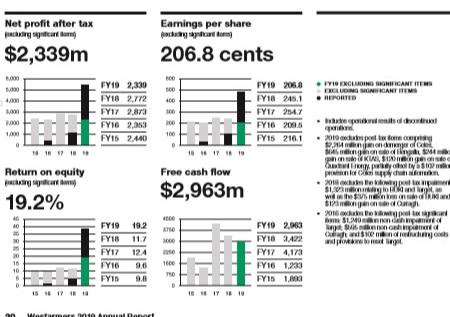
(Wesfarmers 2019)
3 Ratio Analysis
3.1 Profitability and Market ratios
|
(see appendix for calculations) |
YYYY |
YYYY |
Industry average |
|
Return on assets |
19.94% |
3.24% |
% |
|
Return on equity |
33.67% |
5.26% |
% |
|
Net profit margin |
20% |
4% |
% |
|
Gross profit margin |
38% |
39% |
% |
|
Net Interest Income |
NA |
NA |
% |
|
Expense ratio/Cost to Income ratio |
89% |
91% |
% |
|
Cash return on sales |
10% |
0.152449277 |
% |
|
Earnings per share |
206.8 |
245.1 |
$ |
|
Price earnings ratio |
0.1749 |
0.2014 |
Times |
|
Earnings yield |
5.719026549 |
4.965559157 |
% |
|
Dividends per share |
2.78 |
2.05 |
$ |
The profitability ratios are an indicator of the profit earning capacity of the company. It is one of the effective mechanism through which the performance of the company can be ascertained (Chen & Gong 2019). The asset turnover ratio indicates the ability of the company to generate revenue from the effective utilization of the assets. The ratio for Wesfarmers has shown a sharp jump indicating higher sales and effective utilization of the assets. The asset base of the company is huge and the effective utilization has provided a strong jump in the ratio from 3.24% in 2018 to 19.94% in 2019. Similarly, a higher ROE is a potent indicator of business profitability. The higher return on equity indicates that Wesfarmers is using the funds of the investors to generate higher returns; hence, from an investor point of view the company is profitable and lucrative (Varadarajan 2017). Moreover, the higher ROE from
5.26% in 2018 to 33.67% in 2019 indicates that investments made by the company are precise and effectively-structured for profit maximization.
The net profit of the company increased significantly while the gross profit margin showcased a marginal decline.
The net profit margin was high owing to the gains on the demerger of Coles and Bengalla disposal, KTAS, and Quadrant energy. The revenue increased in both sales and commercial markets thereby providing a major boost to the net profit margin (Peirson et al. 2015). The increment from 4% in 2018 to 20% in 2019 was highly beneficial for the company. the EPS of the company declined that can be cited owing to the reduction in debt.
Overall, the profitability of the company is strong and with strong fundamentals, it is expected to provide further strong figures.
3.2 Efficiency ratios
|
(see appendix for calculations) |
2019 |
2018 |
Industry average |
|
Asset turnover |
1.010386133 |
0.724636504 |
Times |
|
Cash return on assets |
0.098360656 |
0.110470311 |
Times |
|
Fixed Asset turnover |
2.329967454 |
0.948134765 |
Times |
|
(see appendix for calculations) |
2019 |
2018 |
Industry average |
|
Asset turnover |
1.010386133 |
0.724636504 |
Times |
|
Cash return on assets |
0.098360656 |
0.110470311 |
Times |
|
Fixed Asset turnover |
2.329967454 |
0.948134765 |
Times |
The efficiency ratio helps understand the manner in which the assets and liabilities are managed by the company (Mersland & Urgeghe 2013). The ATO of Wesfarmers has increased from 0.72 times in 2018 to 1 time in 2019 implying the better usage of assets. through the total assets declined in 2019 to $18333 million yet the company made an effective contribution with the available assets (Wesfarmers 2019). Similarly, the fixed asset turnover increased from 0.98 times in 2018 to 2.32 times in 2019 indicating a positive usage of the fixed assets. It indicates at present the company is generating 2 times more sales than the net book value of the assets.
3.3 Liquidity ratios
|
(see appendix for calculations) |
2019 |
2018 |
Industry average |
|
Current ratio |
1.010386133 |
0.724636504 |
xx:1 |
|
Quick ratio |
0.40:1 |
0.26:1 |
xx:1 |
|
Receivables turnover |
NA |
NA |
Days |
|
Average collection period |
NA |
NA |
Days |
Liquidity enables the company to convert its liquid assets into cash to repay the liabilities and maintain a cordial relationship with the creditors and suppliers (Deegan 2016). Based on the computation, it can be commented that Wesfarmers is having a balanced liquidity ratio where the liquid assets are sufficient to meet the current liabilities. With a current ratio of 1:1 in 2019 Wesfarmers has the desired current assets to meet the current liabilities. Though the standard ratio is 2:1 where $2 of current assets is needed for every dollar of current liabilities yet the present ratio is justified for a giant company like Wesfarmers. However, the quick ratio of the company is below to the standard ratio of 1:1 implying that the business has lack of quick assets to honor the obligations. The stocks are excluded in a quick ratio meaning the stock will not be sold to repay the obligations. Hence, the liquidity perspective of the company is average.
3.4 Gearing ratios
|
(see appendix for calculations) |
2019 |
2018 |
Industry average |
|
Debt to equity ratio |
83.86 |
62.31 |
% |
|
Debt ratio |
46% |
38% |
% |
|
Equity ratio |
54% |
62% |
% |
|
Cash debt coverage |
415% |
348% |
% |
|
Interest cover ratio |
3.462165308 |
3.233103448 |
Times |
Discussion
Maintaining the solvency is an important aspect of the business because it helps the business to procure loans and ensure expansion (Bellandi 2017). However, the company should have debt, and equity is proportion as a high geared company is exposed to higher stakes. Therefore debt in proportion is beneficial for the company. Going by the debt to equity and debt ratio, it can be commented that the company is having a higher proportion of debt (Vernimmen 2017).
The debt-equity of the company increased from 62.31% in 2018 to 83.86% in 2019 indicating that the company is borrowing more and hence might be exposed to risk. Moreover, the debt ratio of the company is below 50% that defines a good structure of debt by the company. Debt is expensive and at present, the company is having the desired ratio to flourish.
4 Recommendations and overall assessment
Has Year 1 been better than Year 2 for the company?
Wesfarmers projected a better performance in 2019 as compared to 2018. Better revenue and reduction n debt was the major highlight for the company. The increment in revenue by 4.3% to $27.9b was followed by an increment of net profit by 13.5% to $1.9 billion indicating the strength of the performance (Wesfarmers 2019). Moreover, the profitability of the company increased to a significant extent in 2019 that was highlighted by an increment in ROE and ROE. Both the ratios posted 33.67% and 19.94% respectively. Furthermore, the liquidity of the company is justified ensuring the company has sufficient liquid assets to meet the obligations. Lastly, the solvency ratio indicates a reasonable debt level used by the company.
Will the company succeed in the future?
Wesfarmers Limited tries to improve its sales with the help of proper expertise in the supply chain, shareholders value, and diversified portfolio. The recent research and industry conversation have also provided reports where the acquisition of Health scope can be very profitable for the organization shortly. This will not only add up to the organization's diverse holdings in retail, coal, agricultural, and manufacturing markets but also will increase the overall pressure exerted by the organization over the market. Hence, it is destined to succeed in the future.
The likelihood of a merger or acquisition?
Consider the relevant ethical considerations if the organisation becomes insolvent
As per the announcements of Wesfarmers, the company has entered into a Scheme Implementation Deed with Kidman Resources Limited whereby it proposed to acquire 100 percent of the shares outstanding for $1.90 per share through arrangement scheme. Another announcement made by the company is that of acquisition of Catch Group Holdings Limited for a whopping amount of $230 million (Wesfarmers 2019).
At present, the company is not contained in any legal disputes arising out of illegal paperwork, failure in claim settlement of the creditors, vendors, and suppliers The liquidator will take the in-charge of realizing the assets of the organization and will ensure that the funds that are raised from this disposal of assets will be used for settling the financial obligations of the creditors. The appointed liquidator will also be responsible for dealing with pending contracts, delisting the name of the organization from the Companies House’ Register, updating the creditors with necessary information from time to time throughout the liquidation process, conducting investigations and interrogating the directors of the organization as and whenever required
Suggest what should the company be doing help it succeeds?
The organization should try to improvise the supply chain processes by inducing forward-thinking processes and inventory solutions that can maximize the value of shareholders. The organization has constantly surpassed analytics and expectations of the market. The major difference in the organization’s approach is the conglomerate structure which provides the investors with part ownership in the various operations conducted by the organization (Wesfarmers Stakeholder engagement 2019). This will provide both personal and professional accountability solutions to the group. This is both a strategic advantage for the company as well as for the shareholders because this will help to provide exposure to the operations of the organization in the industry.
The impact of the political competitive environment on the business
External factors that need to be taken into consideration
Political
Many political factors influence the Retail Industry of Australia. The consistency of the organization in the market and the immense progression has not only created high competition for small businesses but also has forced the government to formulate new policies. These can stop the organization from gaining a monopoly in the market. Many other decisions that can provide a positive impact on the coal industries and barriers to electricity are affected by political matters (Andreou, Louca & Petrou 2016). The organizations need to have strong operations and positive impact over the business with the help of political factors to attract the investors and engage them to bring more investment in the company.
Economic
Australian economic market influences a lot of operations of the Wesfarmers performance. The success of an organization depends on the buying and selling structure of the market. Various micro environmental factors of the country like inflation rates, rate of interest, rate of Savings, and foreign exchange rate are observed to make variations in the demand and investment programs (Herremans, Nazari & Mahmoudian 2016). A proper analysis of all the practices can help the organization to gain a competitive edge in the market. The organization should try and induce measures to understand the trend of consumer spending and the industry growth rate. The profitability of the organization will be affected if the government will intervene in business operations. Therefore, the organization needs to look into the production and business strategy so that they can provide the investors with proper returns.
Social
The Australian population is having a trend of purchasing necessary items once a week. Also, the customers try to buy products under the same roof and choose places where all the items are available. They have a one-stop-shop mindset. Wesfarmers provide such services to the customers which makes it convenient for them. Also, the demographics of the population are properly analyzed by the organization to determine the operational strategies. Targeting the acquired audience is very important for the organization to get a better response from the market.
Technological
Australia is having one of the best and innovative technological measures that can be used by businesses to diversify the product chains. The organizations should try to make application of these technological measures to cater to the needs of the market. The diversified businesses consist of various provisions like chemical, fertilizers, and energy which make it necessary for the organization to organize the data professionally. Using technological measures can help the organization to maintain the information. The organization can also use technological variations to come up with the One-shop state of Technology. This for the society and the customers because it will help not only improve the consumer experience but also at the same time will help the organization to generate more revenue.
Legal
The retail business of Australia is highly impacted because of the imposition of carbon tax policies by the government. Businesses need to conduct operations fairly and ethically. Ethical measures will not only help the organization to have a strong background in the market but also will increase the morale of the business in front of investors. Also as per the government laws, the organization needs to safeguard employees and ensure fair treatment to the workers.
Environmental factors
Various environmental factors affect the business of the organization and the overall Retail Industry of Australia. Various measures and ecological operations have been carried out by the organizations to protect the Earth from environmental degradation. The organization also invests in different technologies to reduce wastage of resources, enhance the definition of climatic changes, and proper uses of water. Maintaining high standards towards the protection of the environment is necessary so that a high CSR ratio can be maintained.
Would you invest in this company?
Wesfarmers is observed to conduct diversified business activities. It owns various businesses including Office works, Kmart, Target, Catch, Bunnings, and other industrial divisions. It also has stakes in various other businesses which helps it to generate income investment in various market segments.
The organization is observed to stand financially stable in the market with an increase in revenue of 6% for the half-year which amounts to $15.25 billion (Wesfarmers 2019). Also, huge growth in the sales of various businesses of the organization is observed. The net profit after tax amounted to $1127 million which represented a 5.7 % increase over the previous financial period (Wesfarmers 2019). The organization is observed to have a strong balance sheet with diversifying the portfolio of cash-generating activities which makes it economically efficient.
It was observed that the organization made a few acquisitions including Lithium producer, Kidman resources, and few others throughout the year 2019. The organization also seeks to improvise the businesses and diversify the business strategies to advance the revenue growth streams. Hence, it can be stated that investment in the organization will be profitable in the long run.
5 References/Bibliography
Andreou, P., Louca, C., & Petrou, A. (2016). Organizational learning and corporate diversification performance. Journal of Business Research, 69(9), 3270-3284. doi:10.1016/j.jbusres.2016.02.022
Bellandi, F. (2017) Materiality in financial reporting. Bingley: Emerald Publishing Limited.
Chen, A., & Gong, J. (2019). Accounting comparability, financial reporting quality, and the pricing of accruals. Advances in Accounting, Incorporating Advances in International Accounting, 45.
Deegan, C. M. (2016) Financial accounting. 8e edn. North Ryde, N.S.W.: McGraw-Hill Education. doi:10.1016/j.adiac.2019.03.003
Herremans, I., Nazari, J., & Mahmoudian, F. (2016). Stakeholder relationships, engagement, and sustainability reporting. Journal of Business Ethics, 138(3), 417-435.
Mersland, R., & Urgeghe, L . (2013)International Debt Financing and Performance of Microfinance Institutions, Strategic Change. 22, 36-47, DOI 10.1002/jsc.1919.
Peirson, G, Brown, R., Easton, S, Howard, P. & Pinder, S. (2015). Finance, 12th ed. North Ryde: McGraw-Hill Australia.
Rakow, K. (2019). Incorporating financial literacy into the accounting curriculum. financial management assignment Accounting Education, 28(4), 384-400. doi:10.1080/09639284.2019.1578247
Varadarajan, R. (2017). Innovating for sustainability: A framework for sustainable innovations and a model of sustainable innovations orientation. Journal of the Academy of Marketing Science : Official Publication of the Academy of Marketing Science, 45(1), 14-36. doi:10.1007/s11747-015-0461-6
Vernimmen, P. (2017) Corporate finance : theory and practice. Fifth edn. Hoboken: Wiley.
Wesfarmers Stakeholder engagement. (2019). Stakeholder engagement. Retrieved from: https://sustainability.wesfarmers.com.au/our-reporting/stakeholder-engagement/
Wesfarmers. (2019). Wesfarmers 2019 annual report & accounts. Retrieved from: https://www.wesfarmers.com.au/docs/default-source/asx-announcements/2019-annual-report.pdf?sfvrsn=0
Appendices – attached Excel Spreadsheet
Ratios
|
Profitability and Market Ratios - WES |
||||
|
|
|
|
|
|
|
|
|
2019 |
2018 |
Average for Industry |
|
|
|
|
|
|
|
Return on Assets |
Profit / Average total assets |
5510 / ((18333+36933)/2) |
1197 /36933 |
|
|
|
|
0.199399269 |
0.03241004 |
|
|
|
|
19.94% |
3.24% |
result % |
|
|
|
|
|
|
|
|
|
|
|
|
|
Return on Equity |
Profit / Average equity |
5510 / ((9971+22754)/2) |
1197 /22754 |
|
|
|
|
0.336745607 |
0.052606135 |
|
|
|
|
33.67% |
5.26% |
|
|
|
|
|
|
|
|
|
|
|
|
|
|
Net Profit Margin |
Net profit / Sales or revenue |
5510/ 27920 |
1197/ 26763 |
|
|
|
|
0.19734957 |
0.044725928 |
|
|
|
|
20% |
4% |
result % |
|
|
|
|
|
|
|
|
|
|
|
|
|
Gross Profit Margin |
Gross profit / Sales or revenue |
10618/ 27920 |
10419/ 26763 |
|
|
|
|
0.38030086 |
0.389306132 |
|
|
|
|
38% |
39% |
result % |
|
|
|
|
|
|
|
|
|
|
|
|
|
Net Interest Income |
Net Interest Income / Average Earning Assets |
NA |
NA |
|
|
|
for banks only |
0 |
0 |
|
|
|
|
0.00% |
0.00% |
result % |
|
|
|
|
|
|
|
|
|
|
|
|
|
Expense ratio |
Expenses (excluding tax) / Net sales |
24946 / 27920 |
24419 / 26763 |
|
|
|
(using operating expenses/operating income) |
0.893481375 |
0.912416396 |
|
|
|
|
89% |
91% |
result % |
|
|
|
|
|
|
|
|
|
|
|
|
|
Cash return on sales |
Net cash flow from operating activity / Sales or Revenue |
2718 / 27920 |
4080/ 26763 |
|
|
|
|
0.09734957 |
0.152449277 |
|
|
|
|
10% |
0.152449277 |
result % |
|
|
|
|
|
|
|
|
|
|
|
|
|
Earnings per share |
Profit for shareholders / Number of ordinary shares |
206.8 |
245.1 |
|
|
|
EPS taken from annual report |
|
|
|
|
|
|
|
|
|
|
|
|
|
|
|
|
Price earnings ratio |
Share price 30 June / Earnings per share |
36.16/206.8 |
49.36/245.1 |
|
|
|
share price 30 June taken from annual report |
0.1749 |
0.2014 |
|
|
|
|
XX times |
XX times |
result times |
|
36.16 |
49.36 |
|
|
|
|
|
|
|
|
|
|
Earnings yield |
EPS / Share price 30 June |
206.8/36.16 |
245.1/49.36 |
|
|
|
share price 30 June taken from annual report |
5.719026549 |
4.965559157 |
|
|
|
|
5.719026549 |
4.965559157 |
result % |
|
|
|
|
|
|
|
|
|
|
|
|
|
Dividends per share |
Dividends - Special dividends/ No of shares |
2.78 |
2.05 |
$xx per share |
|
(determined) |
DPS taken from annual report |
|
|
|
Efficiency
|
Efficiency Ratios - WES |
||||
|
|
|
|
|
|
|
|
|
2019 |
2018 |
Average for Industry |
|
|
|
|
|
|
|
Asset turnover |
Sales / Average total assets |
27920 / ((18333+36933)/2) |
26763 /36933 |
|
|
|
|
1.010386133 |
0.724636504 |
|
|
|
|
xx times |
xx times |
result times |
|
|
|
|
|
|
|
|
|
|
|
|
|
Cashflow return on assets |
Net cash from op activities / Average total assets |
2718/ ((18333+36933)/2) |
4080/36933 |
|
|
|
|
0.098360656 |
0.110470311 |
|
|
|
|
result times |
result times |
result times |
|
|
|
|
|
|
|
|
|
|
|
|
|
Fixed-Asset Turnover Ratio |
Sales / Total non current assets |
27920 / 11983 |
26763 / 28227 |
|
|
|
|
2.329967454 |
0.948134765 |
|
|
|
|
xx times |
xx times |
result times |
Liquidity
|
Liquidity Ratios - WES |
||||
|
|
|
|
|
|
|
|
|
2019 |
2018 |
Average for Industry |
|
|
|
|
|
|
|
Current Ratio |
Total current assets / Total current liabilities |
6350 / 5216 |
8706 / 10025 |
|
|
|
|
1.217407975 |
0.868428928 |
|
|
|
|
1.21:1 |
0.86:1 |
XX:1 |
|
|
|
|
|
|
|
|
|
|
|
|
|
Quick Ratio |
(Total current assets - Inventory) / Total current liabilities |
(6350 - 4246) /5216 |
(8706 - 6011) / 10025 |
|
|
|
|
0.403374233 |
0.26882793 |
|
|
|
|
0.40:1 |
0.26:1 |
XX:1 |
|
Gearing Ratios - WES |
||||
|
|
|
|
|
|
|
|
|
2019 |
2018 |
Average for Industry |
|
|
|
|
|
|
|
Debt to Equity |
Total debt / Total equity or Total liabilities / Total equity |
8362 / 9971 |
14179/ 22754 |
|
|
|
or Actual debt / Total equity |
0.838632033 |
0.623143184 |
|
|
|
|
83.86 |
62.31 |
result% |
|
|
|
|
|
|
|
|
|
|
|
|
|
Debt ratio |
Total debt / Total assets |
8362 / 18333 |
14179/ 36933 |
|
|
|
|
0.456117384 |
0.383911407 |
|
|
|
|
46% |
38% |
result% |
|
|
|
|
|
|
|
|
|
|
|
|
|
Equity Ratio |
Total equity / Total assets |
9971/ 18333 |
22754 / 36933 |
|
|
|
|
0.543882616 |
0.616088593 |
|
|
|
|
54% |
62% |
result% |
|
|
|
|
|
|
|
|
|
|
|
|
|
Cash debt coverage |
Avg total liabilities / $$ from op activities |
((8362 + 14179)/2) / 2718 |
14179/ 4080 |
|
|
|
|
4.146615158 |
3.475245098 |
|
|
|
|
415% |
348% |
result% |
|
|
|
|
|
|
|
|
|
|
|
|
|
Interest coverage ratio |
EBIT / Interest expense |
2974 / 859 |
2344 /725 |
|
|
|
|
3.462165308 |
3.233103448 |
|
|
|
|
xx times |
xx times |
result times |
Financial review
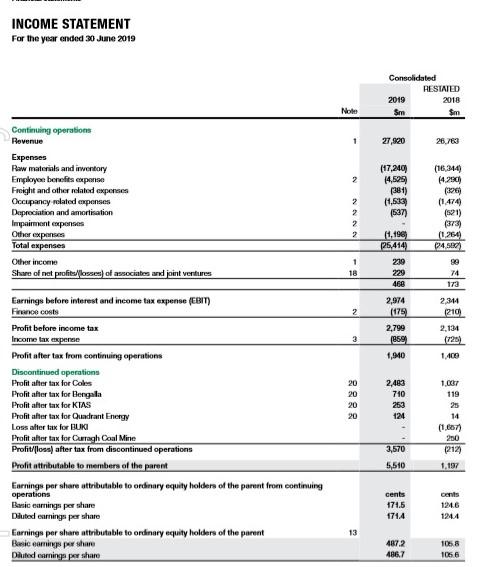
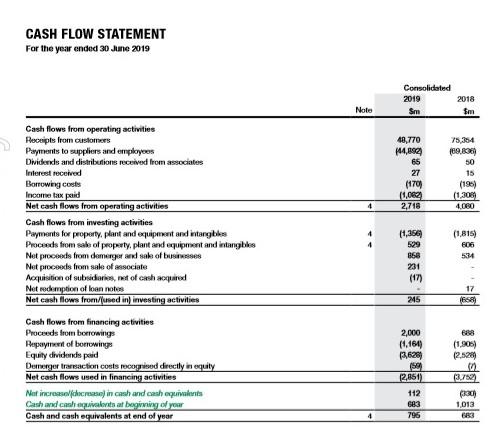
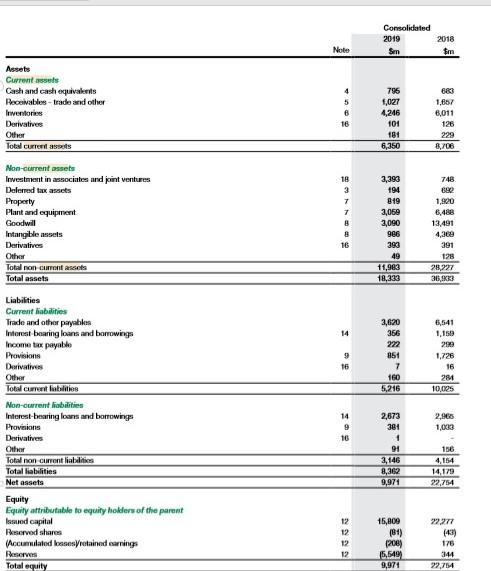
Sustainability
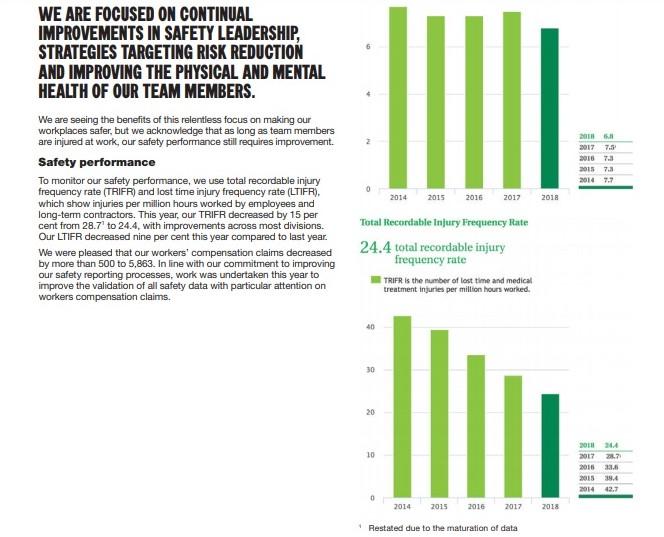
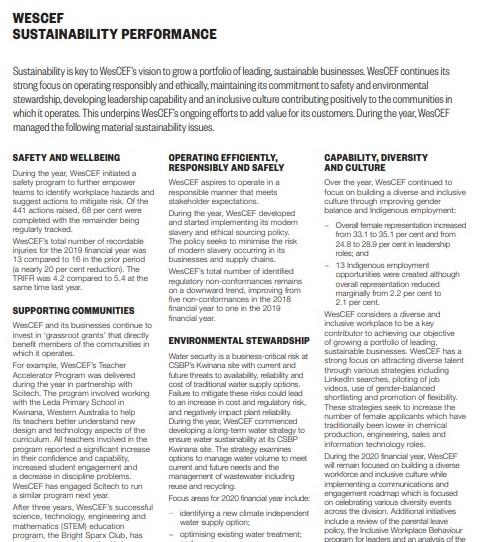
CHECK THE PRICEFOR YOUR PROJECT
Related Samples
- Federated Science Fund Funding Allocation Negotiation
- Financial Health Analysis of Restaurant Brands International (RBI FINANCIAL ANALYSIS)
- The Importance of Accurate Budgeting and NET PRESENT VALUE Analysis for Financial Stability and Growth
- Financial Review assignment on Univeler PLC in a post Pandemic World
- Finance assignment depicting the ratio analysis of Nestle and Unilever and comparing which one is better than the other.
- Finance assignment using budgets and variance analysis for business planning
- Finance assignment evaluating the financial performance of MCDONALD for two consecutive years
- international finance assignment on the effect of Covid 19 on the major global economies
- (AF7006 / AF7011) Finance assignment a critical appreciation for strategic advantage for BHP and Rio Tinto
- Compliance with AASB Standards in JB Hi-Fi Limited Method of Depreciation: Improving Relevance and Authenticity of Financial Reports
- A finance assignment on estimation of the fair value of Alphabet Inc and the suggestion whether the firm may be a profitable choice for investment or not
- Finance assignment providing comparative ratio analysis of British Airways and Virgin Atlantic
- Finance assignment evaluating the reliance on EBITD Aand finding its alternatives
- (BUSM4741) Financial assignment analysing the financial statements of Kogan Com Ltd
- (BUSM1010) Finance assignment analysing the financial performance of Tassal Group Limited(TGR) and Motorcycle Holdings Limited(MTO)
- Finance Management assignment on tax havens for tax management
- (CBE6382) corporate financial management assignment exploring investment strategies for Mcdomalds
- financial resources management assignment for Aus Biotech
- (MBA6003)Finance assignment on adding value when capital markets are seen efficient
- Critical evaluation of the capital structure of Burberry in the finance assignment
- (SOE11444)The role of financial performance assignment research techniques towards determining financial performance measures and targets
- (BU7006)SWOT and PESTLE analysis strategic finance management assignment for JD group
- (BMG704) International finance assignment on the financial performance and the impact of two recent developments of Good year Tire & Rubber
- Financial Decision Making Assignment Focusing On The How Financial Decision Must Be Made By Organisation Heads
- (ACFI7013) International Finance Assignment: Questions and Answers





Other Assignment Services
- My Assignment Help
- SCM Assignment Help
- HRM Assignment Help
- Business Report Writing
- Finance Assignment Help
- Sociology Assignment Help
- Marketing Assignment Help
- Accounting Assignment Help
- Dissertation Assignment Help
- Management Assignment Help
- IT Management Assignment Help
- Marketing Analysis Assignment Help
- Personal Finance Assignment Help
- Corporate Finance Assignment Help
- Financial Accounting Assignment Help
- Managerial Accounting Assignment Help
- Operations Management Assignment Help
- Cost Accounting Assignment Help
- Marketing Research Assignment Help
- Project Management Assignment Help
- Business Statistics Assignment Help
- Information Technology Assignment Help







